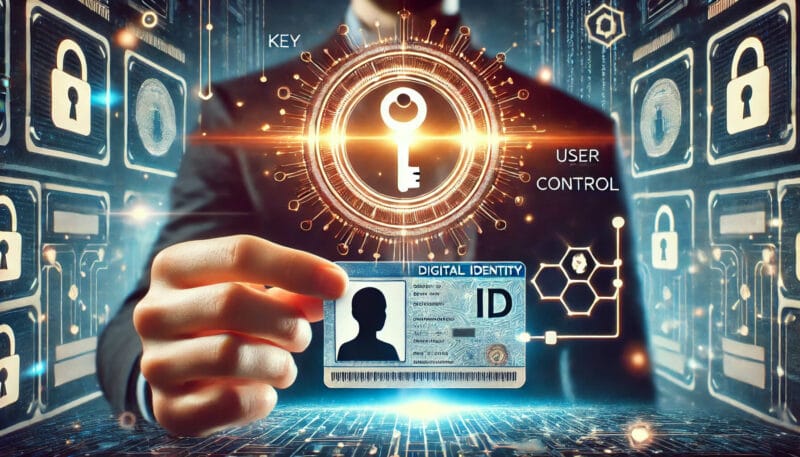The digital age has brought immense convenience but also significant challenges, especially when it comes to managing and securing personal data. Digital identity—the way we prove who we are online—has become a vital aspect of modern life, from logging into social media accounts to accessing banking services. However, current identity management systems are often insecure, fragmented, and vulnerable to data breaches. Blockchain technology is now emerging as a promising solution that could revolutionize digital identity, offering more secure, decentralized, and user-controlled systems. In this article, we’ll explore how blockchain is reshaping the future of digital identity and what it means for individuals and businesses alike.
1. The Problem with Traditional Digital Identity
Traditional digital identity systems rely heavily on centralized databases and third-party providers, such as social media platforms, governments, or banks. This model creates several issues:
- Data Breaches: Centralized databases are prime targets for hackers. If a hacker gains access to one database, they can potentially steal millions of identities at once.
- Lack of User Control: In many cases, users don’t have control over their personal data. Once you provide your information to a service, you’re trusting them to store and protect it securely.
- Identity Fragmentation: Users often need to create multiple accounts for different services, leading to scattered identity information across various platforms, making identity verification cumbersome.
Example:
In 2017, Equifax, a major credit reporting agency, suffered a data breach that exposed the personal information of 147 million people. This breach included sensitive details like Social Security numbers, addresses, and driver’s license numbers—highlighting the risks of centralized identity systems.
2. How Blockchain Can Solve These Issues
Blockchain technology offers a decentralized solution for digital identity, putting control back in the hands of users. Instead of relying on a single entity to store and manage personal data, blockchain enables individuals to maintain ownership of their digital identity. Here’s how it works:
- Decentralized Identity Management: With blockchain, identity data is stored on a decentralized ledger. This means no single organization or entity controls your information, reducing the risks of a centralized attack.
- Self-Sovereign Identity (SSI): Blockchain enables users to create self-sovereign identities. These are digital identities owned and controlled entirely by the user. Individuals can share only the information required for a specific interaction, without revealing unnecessary personal data.
- Immutable Records: Once data is recorded on the blockchain, it cannot be altered or deleted. This immutability ensures that identity records remain secure and tamper-proof.
Example:
Imagine accessing your bank account using a blockchain-based digital identity. Instead of entering a password, the system could verify your identity using a blockchain key associated with your unique digital identity. You have complete control over who can access your data and when.
3. The Role of Self-Sovereign Identity (SSI) in Blockchain
One of the most exciting developments in digital identity is the concept of self-sovereign identity (SSI). SSI refers to a digital identity that belongs entirely to the individual. Blockchain technology makes it possible to create, store, and verify these identities without needing to rely on third-party intermediaries.
Key Benefits of Self-Sovereign Identity:
- User Control: Individuals own their personal data and can decide who gets access to it.
- Privacy: Instead of sharing all your information, you can provide only the minimum required data (such as age or nationality) to verify your identity.
- Security: Since blockchain is decentralized and uses cryptographic principles, the risks of hacking or tampering are significantly reduced.
Example:
Suppose you’re trying to verify your age to buy a product online. Instead of providing a scanned ID or full details, a self-sovereign identity can simply prove that you’re over a certain age without revealing your birthdate or other personal data. This is done through cryptographic verification on the blockchain.

4. Blockchain for Personal Data Security
Blockchain technology is inherently secure due to its decentralized and cryptographic nature. Unlike traditional systems where a breach of one database can compromise millions of records, blockchain spreads data across multiple nodes, making it extremely difficult for hackers to alter or steal information.
Key Security Features of Blockchain:
- Decentralization: No single point of failure means there’s no central database for hackers to attack.
- Encryption: Blockchain uses advanced cryptography to secure data, ensuring that only authorized parties can access it.
- Immutability: Once data is recorded on a blockchain, it’s virtually impossible to alter without the consent of all parties involved. This makes identity fraud extremely difficult.
Example:
Consider a healthcare provider using blockchain to store patient records. Instead of holding patient information in a central database, the data is encrypted and stored on the blockchain. The patient retains control over their records and can grant or revoke access to specific healthcare providers as needed, ensuring their privacy and security.
5. Blockchain and Digital Identity Use Cases
The potential for blockchain in digital identity extends across many industries, from healthcare to finance, and even government services. Here are a few use cases where blockchain could transform identity management:
Financial Services:
Blockchain-based identities can streamline KYC (Know Your Customer) processes, which banks and financial institutions use to verify customer identities. This can reduce fraud and simplify onboarding processes for new customers.
Healthcare:
Blockchain can enable patients to securely store and share their medical records, ensuring that only authorized healthcare providers have access to their data. This also simplifies medical record transfers between providers.
Government Services:
Blockchain can support digital voting systems, ensuring secure and transparent elections where every vote is recorded immutably. Citizens can also use blockchain identities to access government services more efficiently.
Example:
In Estonia, the government has already implemented a blockchain-based e-Residency program, allowing citizens to access a secure, digital identity that they can use for online banking, government services, and business registration.
6. Challenges and the Future of Blockchain-Based Digital Identity
While blockchain holds immense potential for transforming digital identity, several challenges remain, including:
- Regulatory Concerns: Governments need to develop clear regulatory frameworks for blockchain-based identities, ensuring they comply with privacy laws like GDPR.
- Adoption Barriers: Businesses and consumers need to be educated about the benefits and workings of blockchain to drive widespread adoption.
- Interoperability: Blockchain identity systems need to be interoperable with existing digital identity frameworks to ensure seamless integration across platforms.
Despite these challenges, the future of blockchain-based digital identity looks promising. As more organizations and governments experiment with decentralized identity solutions, we can expect to see a more secure, privacy-focused digital identity system emerge over the next decade.
For more insights and detailed guides on blockchain technology and its applications, visit our Blockchain Technology Guides.
Stay Updated
For the latest updates on blockchain-based digital identity, follow us on:
Stay informed with the latest strategies and insights in the world of cryptocurrency and blockchain technology at FreeCoins24.io.
Special Offer
Looking to explore blockchain technology further? Sign up on Bybit today and enjoy up to $30,000 in deposit bonuses. Start your blockchain journey with a platform trusted by millions.

















